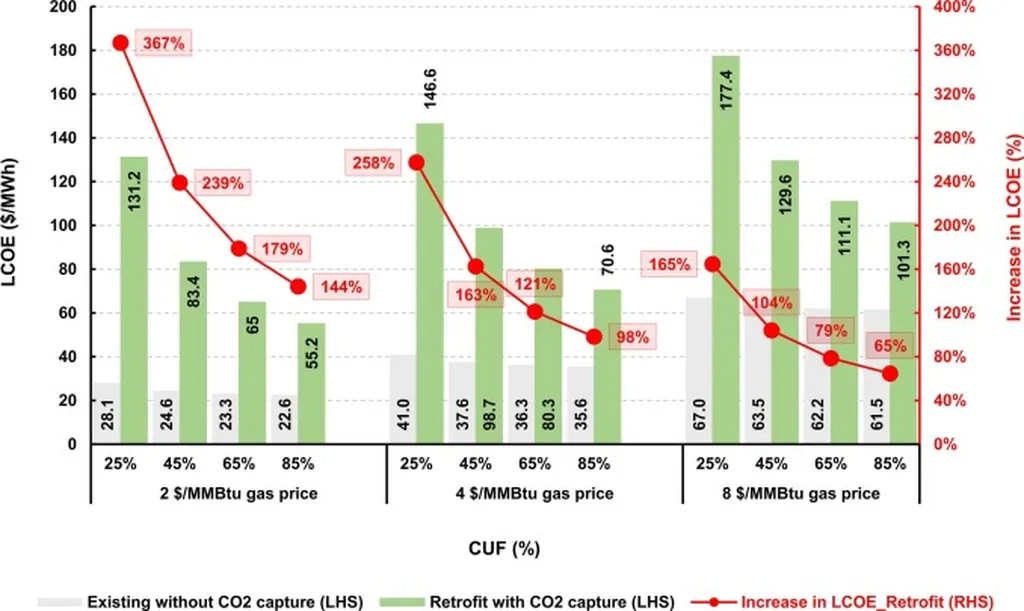In a significant stride towards understanding the implications of carbon capture and storage (CCS) technology, a recent study published in the *Journal of High Technology and Innovation* has shed light on the techno-economic impacts of integrating CCS with natural gas combined cycle (NGCC) power generation. Led by Mujammil Asdhiyoga Rahmanta from PT PLN’s Research Institute in Jakarta and Gadjah Mada University in Yogyakarta, the research provides a nuanced look at the trade-offs between reducing carbon emissions and maintaining economic viability in the energy sector.
The study focuses on amine-based post-combustion capture technology, a method that captures CO₂ emissions after the combustion process. Using the Integrated Environment Control Model (IECM) software, Rahmanta and his team simulated the effects of adding CCS to three blocks of NGCC power plants. The results reveal a substantial reduction in net power output across all blocks. For instance, Block 1 saw a 27% drop in net power, from 133 MW to 97.6 MW, while Block 2 and Block 3 experienced declines of 17% and 13%, respectively. “The addition of CCS significantly impacts the power output and thermal efficiency of NGCC plants,” Rahmanta noted, highlighting the inherent challenges of balancing environmental benefits with operational efficiency.
Thermal efficiency also took a hit with the installation of CCS. Block 1’s efficiency plummeted from 40.85% to 30%, Block 2 from 45.24% to 37.69%, and Block 3 from 53.89% to 46.79%. These efficiency losses translate into higher operational costs, a critical factor for energy providers. The levelized cost of electricity (LCOE) increased notably with CCS implementation, rising by 80% for Block 1, 47% for Block 2, and 42% for Block 3. “The financial implications are substantial,” Rahmanta explained, “but the sensitivity analysis shows that with the right carbon pricing, CCS can become economically competitive.”
The study’s sensitivity analysis indicates that achieving LCOE competitiveness with the national weighted average is possible when carbon prices exceed specific thresholds: 145 USD/t CO₂ for Block 1, 90 USD/t CO₂ for Block 2, and 45 USD/t CO₂ for Block 3. These findings underscore the importance of carbon pricing mechanisms in incentivizing the adoption of CCS technology. “This research provides essential insights for future energy policy and CCS adoption strategies,” Rahmanta stated, emphasizing the need for a balanced approach that considers both environmental and economic factors.
The implications of this study are far-reaching for the energy sector. As the world grapples with the urgent need to reduce greenhouse gas emissions, the trade-offs between power generation efficiency, costs, and carbon capture become increasingly critical. Rahmanta’s research highlights the potential of CCS technology to mitigate CO₂ emissions, but also the significant challenges that must be overcome to make it economically viable. “The findings emphasize the need for continued innovation and policy support to advance CCS technology,” Rahmanta concluded, offering a hopeful outlook for the future of sustainable energy.
Published in the *Journal of High Technology and Innovation*, this study serves as a vital resource for policymakers, energy providers, and researchers seeking to navigate the complex landscape of carbon capture and storage. As the energy sector evolves, the insights from this research will undoubtedly shape future developments and strategies aimed at achieving a more sustainable and economically viable energy future.

